Frijoles Colorados: Guatemalan Red Bean Recipes & Culinary Traditions
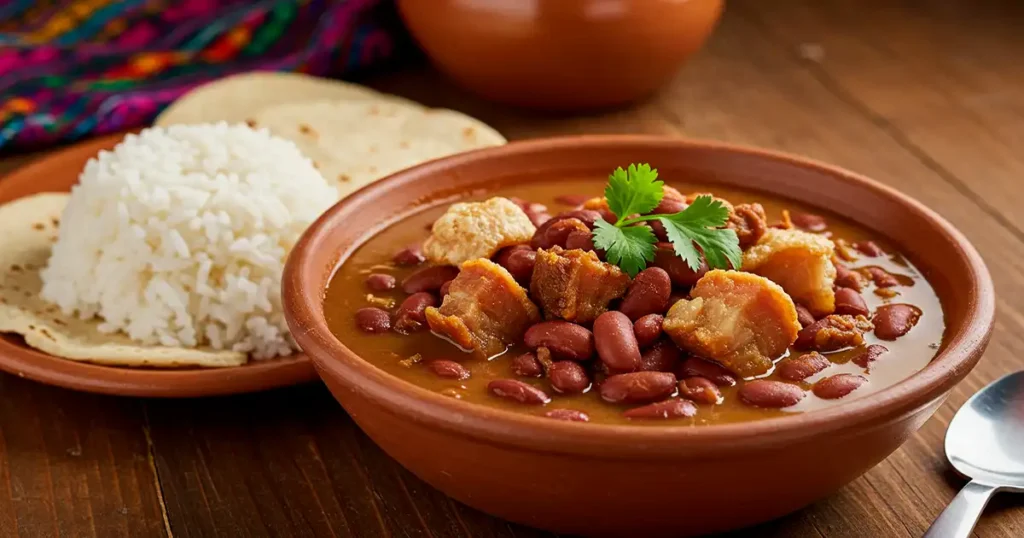
Guatemala, a land of vibrant culture and breathtaking landscapes, boasts a culinary heritage as rich and diverse as its history. While black beans (Phaseolusvulgaris) undeniably reign supreme in the everyday Guatemalan diet, forming the soulful base of iconic preparations like frijoles parados (whole beans) and frijoles volteados (refried beans), another humble legume adds its unique character to the nation's gastronomy: frijoles colorados, or red beans.
Though perhaps not as ubiquitously consumed as their darker counterparts, frijoles colorados hold a special place in the Guatemalan kitchen. They are often the star of heartier, more distinctly flavored dishes, appearing in rich stews, aromatic soups, and delightful rice combinations that showcase their versatility.
This article delves into the world of frijoles colorados within the Guatemalan context, exploring their characteristics, the notable dishes they feature in, and their cultural significance in a cuisine predominantly known for its love of black beans.
What Are Frijoles Colorados? A Profile of Red Beans
Frijoles colorados generally refer to various types of red beans, with the most common being kidney beans (both light and dark red) and smaller, oval-shaped red beans. These beans are appreciated worldwide for their robust flavor, pleasing texture, and excellent nutritional profile.
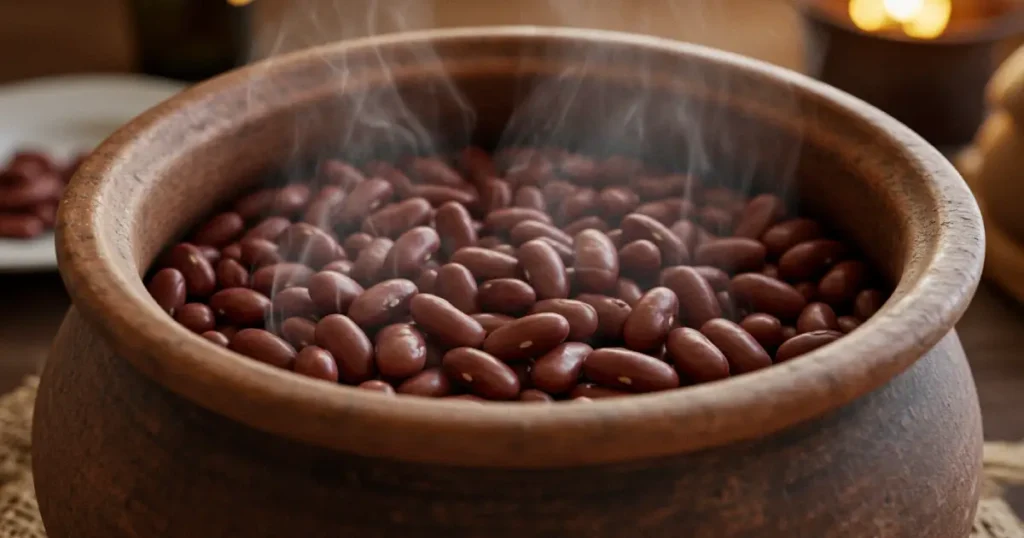
Characteristics of Red Beans
- Appearance: As their name suggests, frijoles colorados are distinguished by their vibrant red hue, which can range from a pale pinkish-red to a deep, rich crimson or mahogany, depending on the specific variety. Kidney beans are larger and, as their name implies, kidney-shaped, while other red bean varieties might be smaller and more rounded.
- Flavor Profile: Red beans generally possess a mild, slightly sweet, and earthy flavor. They have a fuller, more robust taste compared to the often subtler, sweeter notes of black beans. This makes them stand up well to stronger seasonings and accompanying ingredients.
- Texture: When cooked, red beans tend to hold their shape well, even after long simmering. They offer a firm yet tender bite, with a creamy interior. This ability to remain intact makes them ideal for stews and dishes where distinct bean texture is desired. If cooked long enough or mashed, they can also yield a creamy, thicker consistency.
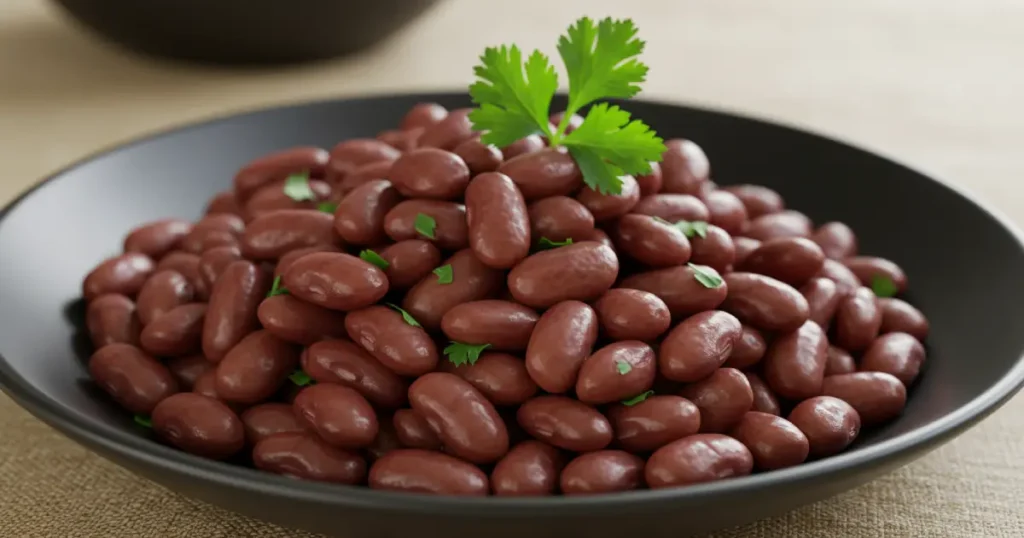
Nutritional Benefits
Like all legumes, frijoles colorados are a nutritional powerhouse. They are an excellent source of:
- Plant-Based Protein: Providing essential amino acids for muscle development and overall health.
- Dietary Fiber: High in both soluble and insoluble fiber, which aids digestion, promotes satiety, helps regulate blood sugar levels, and can contribute to lowering cholesterol.
- Complex Carbohydrates: Offering sustained energy release.
- Vitamins and Minerals: Rich in folate, iron, magnesium, potassium, phosphorus, and manganese. They also contain antioxidants, particularly in their dark red skins.
This impressive nutritional makeup makes red beans a valuable component of a healthy and balanced diet.
Frijoles Colorados in the Context of Guatemalan Cuisine
It's essential to understand that in Guatemala, black beans are the undisputed everyday staple. As noted by culinary observers and locals alike, black beans are served with most meals and are the primary choice for the classic Guatemalan preparations of simple boiled beans (parados) and refried beans (volteados). However, this doesn't mean frijoles colorados are absent; rather, they tend to appear in specific culinary applications.
Prevalence Compared to Black Beans
Studies and anecdotal evidence consistently show that black beans are the most consumed bean variety in Guatemala. Restaurants predominantly feature black beans, and they are the standard in most households for daily meals. Red beans, along with white beans and other varieties, are available in markets and are certainly used, but they play a more specialized role. In contrast, neighboring countries like El Salvador feature red beans more prominently as their primary bean.
Regional Preferences or Specific Dishes in Guatemala
While black beans dominate nationwide, frijoles colorados shine in particular dishes, some of which may have regional ties or reflect specific culinary traditions within Guatemala:
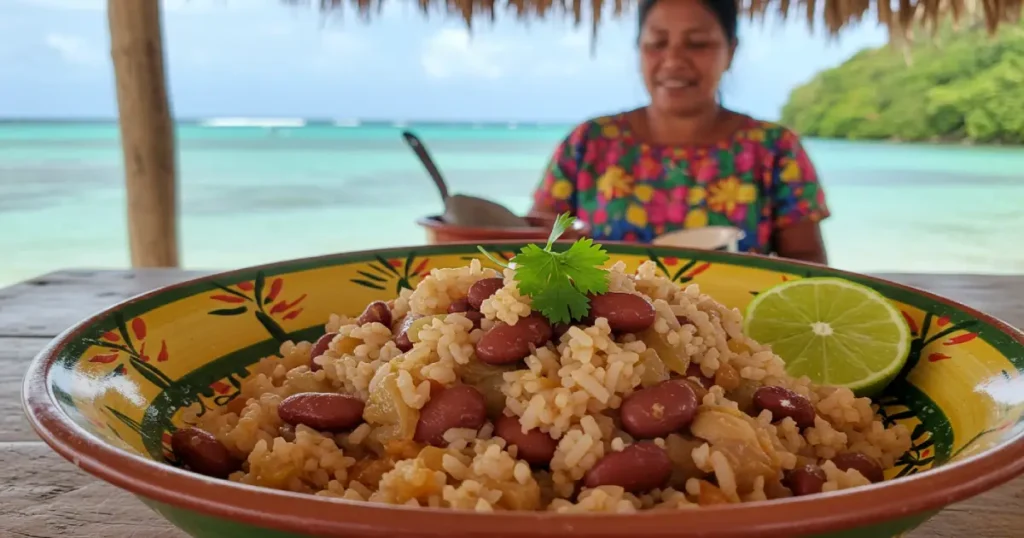
- Caribbean Coast Influence: Dishes like "Rice and Beans" prepared with coconut milk, often using red beans, are popular in areas with Caribbean cultural heritage, such as Livingston. This preparation style is common throughout the Caribbean and has found a flavorful expression in Guatemala.
- Highland Stews: In some highland areas, red beans are incorporated into hearty stews and soups, often with meats and a variety of vegetables and spices, creating complex and satisfying meals.
Instead of being the standard "beans on the side," frijoles colorados in Guatemala are often a key ingredient in a distinct, named dish.
Notable Guatemalan Dishes Featuring Frijoles Colorados
When Guatemalans cook with frijoles colorados, they often create dishes with memorable flavors and textures, going beyond simple boiling.
Frijoles Colorados con Chicharrón
This is perhaps one of the most traditional and celebrated Guatemalan dishes specifically calling for red beans. Frijoles Colorados con Chicharrón is a hearty and flavorful stew that combines tender red beans with crispy pork cracklings (chicharrón). The magic of this dish often lies in its "recado" – a rich sauce or flavor base.
- Key Ingredients: Dried red beans, chicharrón (pork cracklings, sometimes with some meat attached), tomatoes, miltomate (tomatillos), onions, garlic, and often a distinctive element like toasted and ground pepita de ayote (pumpkin seeds), which adds a unique nutty flavor and texture to the sauce. Chile guaque or chile pasa might be used for a mild smoky depth.
- Preparation: The red beans are typically soaked and cooked until tender. Separately, a recado is prepared by roasting and then blending the tomatoes, miltomates, onions, garlic, chiles, and ground pepita. This sauce is then combined with the cooked beans, and the chicharrones are added to simmer in the stew, softening slightly and infusing the dish with their savory pork flavor.
- Cultural Significance: This dish is considered a traditional specialty, with some noting its particular popularity in regions like Chimaltenango. It's a perfect example of how simple, accessible ingredients can be transformed into a truly special and comforting meal.
Rice and Beans with Coconut Milk (Arroz con Frijoles Colorados y Leche de Coco)
Reflecting Caribbean culinary influences, particularly along Guatemala's Atlantic coast, this dish is a creamy, aromatic, and subtly sweet preparation.
- Key Ingredients: Red beans (often small red beans), white rice, coconut milk, onion, bell peppers (often red), garlic, thyme, and sometimes a hint of spice.
- Preparation: The red beans are cooked until tender. Rice is typically sautéed with aromatics like onion, bell pepper, and garlic, then cooked in a mixture of water and rich coconut milk, with the cooked red beans added to simmer together. The result is a flavorful, integrated dish where the rice absorbs the coconut milk and the essence of the beans.
- Serving: Often served as a substantial side dish or a main course, it can accompany chicken, fish, or other meats.
Guatemalan-Style Red Beans with Chorizo (Frijoles Colorados con Chorizo)
This robust dish pairs the earthiness of red beans with the smoky, spicy flavor of chorizo (a seasoned pork sausage).
- Key Ingredients: Dried red beans, Guatemalan chorizo (which can vary from fresh to cured), tomatoes, onion, garlic, cumin, and sometimes chili powder for an extra kick.
- Preparation: The beans are cooked until tender. The chorizo is typically sliced and fried to render some of its fat and develop its flavor. Aromatics like onion and garlic are sautéed, often in the chorizo fat, followed by tomatoes to create a flavorful broth. This mixture is then combined with the cooked beans and simmered to allow the flavors to meld. The beans often break down slightly, thickening the broth.
- Enjoyment: These beans are delicious served with rice, fresh tortillas, and perhaps a dollop of crema or a sprinkle of queso fresco. They can be a hearty meal on their own or a component in tacos or tostadas.
Sopa de Frijoles Rojos Guatemalteca (Guatemalan Red Bean Soup)
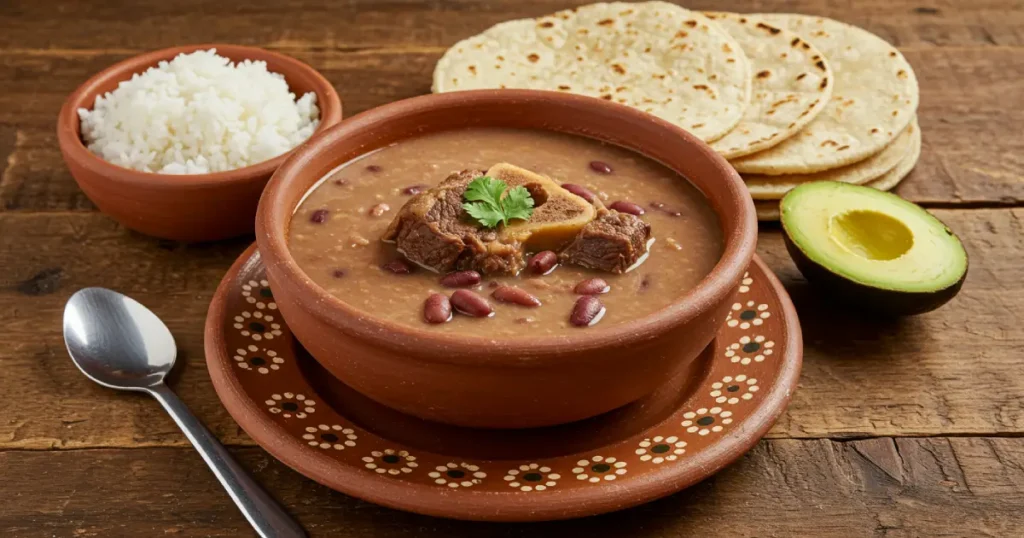
A comforting and nutritious soup, this dish showcases red beans in a brothy, flavorful preparation.
- Key Ingredients: Red beans, often beef shank or other soup bones for a richer broth, onion, garlic, tomatoes, cilantro, bay leaves, thyme, and other vegetables like carrots or potatoes if desired.
- Preparation: The beans are soaked and then simmered with the meat, aromatics, and herbs until the beans are tender and the meat is cooked through. Sometimes, a portion of the cooked beans is blended and added back to the soup to create a creamier, thicker consistency.
- Serving: Typically served hot, accompanied by white rice, sliced avocado, and warm corn tortillas. It's a wholesome and satisfying meal, especially on cooler days.
How to Cook Frijoles Colorados – Guatemalan Style
While specific recipes vary, the general approach to cooking dried red beans for these Guatemalan dishes follows a familiar pattern.
Ingredients You'll Generally Need:
- 1 lb dried red beans (kidney or small red beans)
- Water for soaking and cooking
- Aromatics: White onion (halved or quartered), garlic cloves (whole or smashed) – these are for the initial bean cooking.
- Salt to taste (added towards the end of cooking)
- For specific dishes, additional ingredients for the recado or flavor base will be required, as detailed in the dish descriptions above (e.g., tomatoes, miltomates, chiles, chorizo, coconut milk, herbs like thyme or cilantro, spices like cumin).
Soaking and Cooking Process for Red Beans:
- Rinse and Pick: Spread the dried red beans on a flat surface and pick out any stones, debris, or shriveled beans. Rinse them thoroughly under cold running water.
- Soak: Place the rinsed beans in a large bowl or pot and cover them with cold water by at least 2-3 inches. Allow them to soak for at least 8 hours or overnight. Soaking helps them cook more evenly and reduces cooking time. Alternatively, use a quick-soak method: bring beans and water to a boil for 2-3 minutes, remove from heat, cover, and let stand for 1 hour. Drain the soaking water and rinse the beans again.
- Initial Cooking: Place the soaked beans in a large, heavy-bottomed pot. Add fresh water to cover by about 2 inches. Add the basic aromatics for cooking the beans themselves, like a halved onion and a few cloves of garlic.
- Simmer: Bring the water to a boil, then reduce the heat to low, cover the pot (leaving a small gap for steam to escape), and let the beans simmer gently. Red beans typically take 1.5 to 2.5 hours to become tender, depending on their age and whether they were soaked. Stir occasionally and add more hot water if needed to keep the beans submerged.
- Season and Continue: Once the beans are tender (easily mashed with a fork), add salt to taste. Continue to simmer for another 20-30 minutes to allow the beans to absorb the salt.
- Incorporate into Dish: At this point, the simply cooked red beans can be used as the base for specific Guatemalan recipes like Frijoles Colorados con Chicharrón or Sopa de Frijoles Rojos, where further ingredients and recados are added.
Tips for Achieving Authentic Flavor and Texture:
- Patience is Key: Allow red beans ample time to simmer gently until truly tender.
- Build Flavor Layers: For dishes like those with chorizo or chicharrón, browning the meat and sautéing the vegetables for the recado properly develops deep flavors.
- Fresh Ingredients: Use fresh tomatoes, onions, garlic, and herbs whenever possible for the best taste.
- Toasted Spices/Seeds: If a recipe calls for toasted pepita or cumin, toasting them before grinding or adding them to the dish will significantly enhance their aroma and flavor.
- Don't Salt Too Early: Adding salt at the beginning of the cooking process can sometimes make the bean skins tougher. It's best to add it once the beans have softened.
Serving Suggestions and Accompaniments
Guatemalan dishes featuring frijoles colorados are typically served as hearty main courses or substantial components of a meal.
- With White Rice: This is a classic pairing, as the rice helps to soak up the flavorful broths and sauces of the bean dishes.
- Warm Corn Tortillas: Essential for scooping, dipping, and accompanying any Guatemalan bean dish.
- Queso Fresco or Seco: A sprinkle of crumbly, salty cheese can add a nice textural and flavor contrast.
- Crema Guatemalteca: A dollop of Guatemalan cream can add richness and a cooling counterpoint, especially to spicier bean preparations.
- Sliced Avocado: Adds creaminess and healthy fats.
- Picante (Hot Sauce): For those who enjoy extra heat, a traditional Guatemalan hot sauce, often made with chiltepines, can be served on the side.
Cultural Significance and Local Traditions
While black beans are the everyday symbol of Guatemalan sustenance, frijoles colorados, through dishes like Frijoles Colorados con Chicharrón, represent a more festive or specialized culinary tradition. These dishes often require more ingredients and preparation time, making them suitable for family gatherings, special occasions, or when a more elaborate meal is desired.
The use of red beans also highlights the diversity within Guatemalan agriculture and cuisine. Guatemala is part of the Mesoamerican center of origin for Phaseolus beans, and while black varieties are preferred for daily use, the presence of red, white, and other colored beans in markets and recipes speaks to this rich agrobiodiversity. Dishes using frijoles colorados may also reflect regional adaptations or historical culinary exchanges, such as the Caribbean influence seen in coconut-based bean dishes.
Frijoles Colorados: A Colorful and Nutritious Addition
Though not the everyday bean of choice for most Guatemalans, frijoles colorados offer a delightful variation in flavor, texture, and appearance. They demonstrate the adaptability of Guatemalan cuisine, incorporating a wider palette of ingredients into unique and satisfying dishes. From the hearty Frijoles Colorados con Chicharrón to the tropical allure of Rice and Beans with Coconut Milk, red beans provide a canvas for rich sauces, savory meats, and aromatic spices.
Conclusion
Frijoles colorados, while playing a supporting role to the ever-present black bean in Guatemala, are a cherished ingredient that brings color, robust flavor, and hearty satisfaction to the national table. They are featured in specific, memorable dishes that showcase the depth and breadth of Guatemalan home cooking and regional specialties. Exploring the world of frijoles colorados in Guatemala offers a delicious glimpse into the country's diverse culinary traditions, where even a less common bean can be transformed into a celebrated and flavorful centerpiece.

Leave a Reply